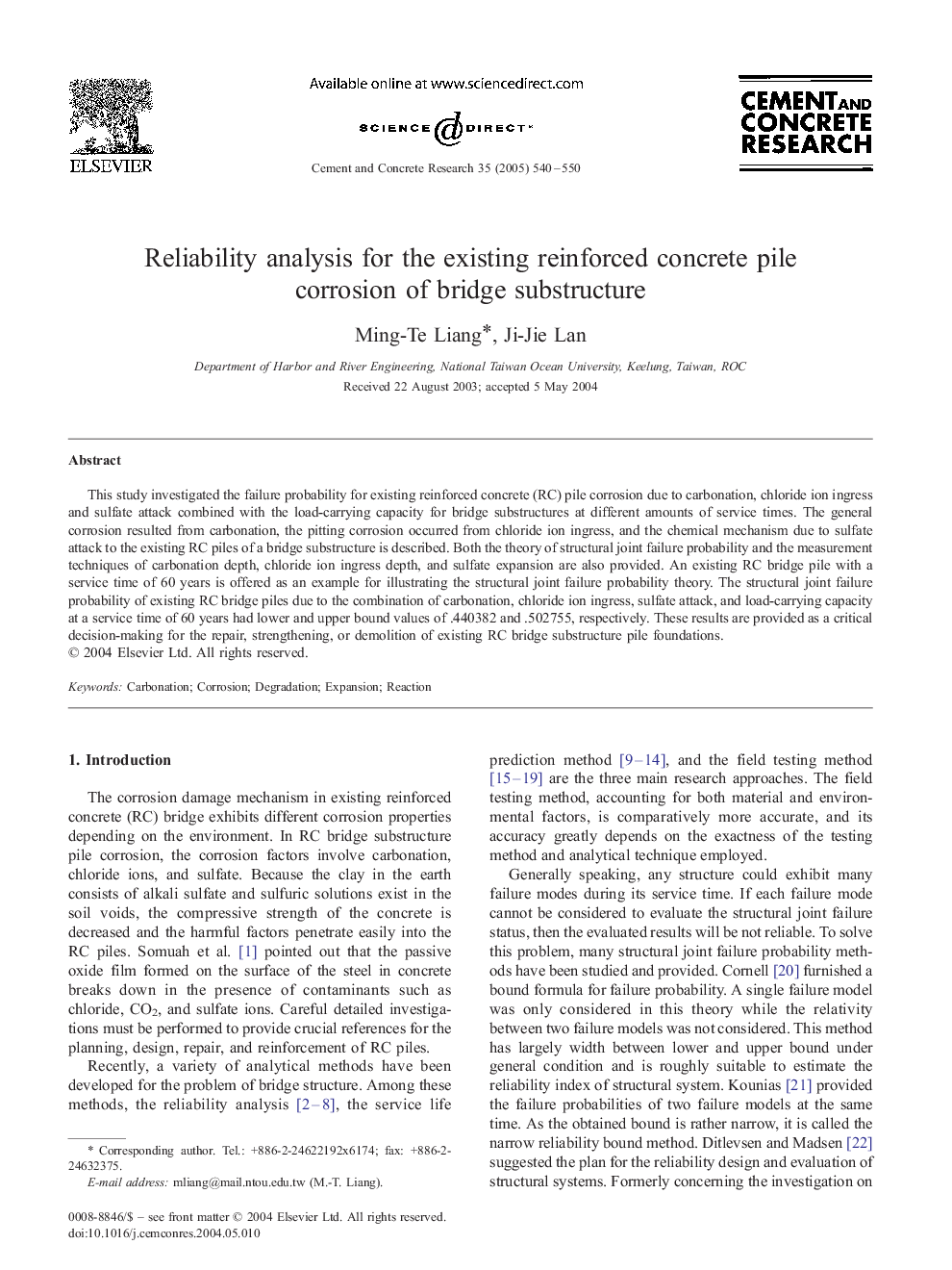| Article ID | Journal | Published Year | Pages | File Type |
|---|---|---|---|---|
| 10622542 | Cement and Concrete Research | 2005 | 11 Pages |
Abstract
This study investigated the failure probability for existing reinforced concrete (RC) pile corrosion due to carbonation, chloride ion ingress and sulfate attack combined with the load-carrying capacity for bridge substructures at different amounts of service times. The general corrosion resulted from carbonation, the pitting corrosion occurred from chloride ion ingress, and the chemical mechanism due to sulfate attack to the existing RC piles of a bridge substructure is described. Both the theory of structural joint failure probability and the measurement techniques of carbonation depth, chloride ion ingress depth, and sulfate expansion are also provided. An existing RC bridge pile with a service time of 60 years is offered as an example for illustrating the structural joint failure probability theory. The structural joint failure probability of existing RC bridge piles due to the combination of carbonation, chloride ion ingress, sulfate attack, and load-carrying capacity at a service time of 60 years had lower and upper bound values of .440382 and .502755, respectively. These results are provided as a critical decision-making for the repair, strengthening, or demolition of existing RC bridge substructure pile foundations.
Related Topics
Physical Sciences and Engineering
Engineering
Industrial and Manufacturing Engineering
Authors
Ming-Te Liang, Ji-Jie Lan,
